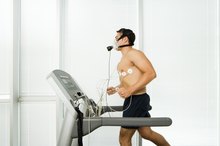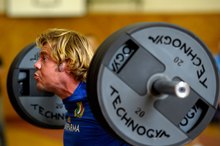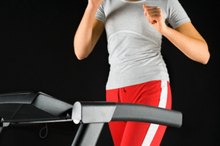What does fact checked mean?
At Healthfully, we strive to deliver objective content that is accurate and up-to-date. Our team periodically reviews articles in order to ensure content quality. The sources cited below consist of evidence from peer-reviewed journals, prominent medical organizations, academic associations, and government data.
The information contained on this site is for informational purposes only, and should not be used as a substitute for the advice of a professional health care provider. Please check with the appropriate physician regarding health questions and concerns. Although we strive to deliver accurate and up-to-date information, no guarantee to that effect is made.
Male Average Pulse With Treadmill Exercise
Given all of the variables, finding the correct pulse rate for a guy who runs on a treadmill can be somewhat of an adventure. With a proper understanding of your physiology, over-all fitness level, state of health, and what type of workout you are performing, you should be able to gauge your level of effort, and if you are in a safe heart rate zone. Also, because of the physiological differences between the genders, what works for a woman won't work for you.
Maximum Heart Rate
The first thing you need to do is calculate your maximum heart rate during exercise. Although the American Heart Association, or AHA, states that there is now a new gender-specific heart rate formula, the only real change affects women 1. Guys can still use the standard formula of subtracting their age from 220 for an approximation of their max heart rate. So if you are 50-years-old, your approximate max heart rate is 170 beats per minute.
- The first thing you need to do is calculate your maximum heart rate during exercise.
- Guys can still use the standard formula of subtracting their age from 220 for an approximation of their max heart rate.
General Training Zone
How to Calculate VO2 Reserve
Learn More
Referring to the AHA's target heart rate zone chart, you should stay with the broad range of 50 to 85 percent of your max heart rate, according to your age, as you do your workout on the treadmill. Using your age of 50 again, this means that you should be in the zone of 85 to 145 bpm as you workout. This is a very broad range for any man, but just remember that the harder you walk or run on a treadmill, the faster or harder your heart will beat.
Increasing Heart Rate
With the understanding that the heart will work harder as you increase your effort on the treadmill, be cautious to patiently increase over a period of time. As with most things, too much too soon on the treadmill will usually result in poor performance, possible injury and just plain not having any fun. As you increase your effort, knowing the different heart rate zones that apply to you can help. In a target heart rate chart for men, a 50-year-old man will be in the top end zone of 90 to 100 percent heart rate with between 153 to 170 bpm 2. Shorter periods of time should be spent in this zone until you can increase your fitness and effort safely.
- With the understanding that the heart will work harder as you increase your effort on the treadmill, be cautious to patiently increase over a period of time.
- Shorter periods of time should be spent in this zone until you can increase your fitness and effort safely.
Personal Adjustments
What is a Good Deadlift, Squat and Bench Press?
Learn More
Once you get a feel of where your level of fitness is during your treadmill workout, you can stray away some from the standard max heart rate formula to see what is right for you. Through experimentation by varying the time and effort of your workout, and how well you recuperate, you will be better able to see what works for you. Even though you may be 50-years-old, you may have been exercising consistently for a long time, which usually means you can sustain a higher max heart rate than what the standard formula tells you. If you have been sedentary for many years you may only sustain a heart rate much lower than predicted.
- Once you get a feel of where your level of fitness is during your treadmill workout, you can stray away some from the standard max heart rate formula to see what is right for you.
- Even though you may be 50-years-old, you may have been exercising consistently for a long time, which usually means you can sustain a higher max heart rate than what the standard formula tells you.
Overload Principle
In an article on target heart rate zone training from Purdue University North Central, it is noted that by working out at a higher level of effort or overloading your cardiovascular system, the heart will slowly become stronger. Once the heart grows stronger from this work overload from your treadmill workout, it becomes more efficient. This new strength and efficiency will actually increase the max heart rate, and training zones, thereby allowing you to run or walk faster and farther without overly taxing the heart.
Related Articles
References
- American Heart Association: Calculating and Monitoring Your Target Heart Rate
- Diet and Fitness Resources: Target Heart Rate Chart for Men
- American Heart Association. Know your target heart. Updated June 2015.
- Edwards S. The Heart Rate Monitor Guidebook. Velo Press. 1999.
- American Heart Association. Know your target heart rates for exercise, losing weight and health. Updated June 2015.
- Harvard Medical School. Do you need to talk to a doctor before starting your exercise program?.
- Brookreson N. Using Heart Rate Monitoring for Personal Training. American College of Sports Medicine. https://certification.acsm.org/blog/2015/july/using-heart-rate-monitoring-for-personal-training.
Writer Bio
Karl Gruber is a runner and triathlete who is a practicing Law of Attraction Life Coach. He is also the author of a book about marathon running, a sport he also coaches and competes in. He holds a Bachelor of Arts in communications from Ohio State University.









